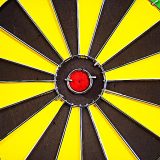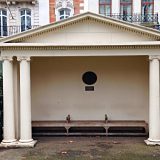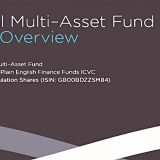The Plan is an action plan bringing together the lessons from each of the 7 Circles.
- It also incorporates the lessons from the MoneyDeck series, a pack of 52 playing cards that describe the “golden rules” for Private Investors in the UK.
- And it links to our Elements series, which forms a Periodic Table of Investing
As well as things you must do, some of these rules describe things you should avoid doing.
Contents
Circle 1 – The Problem
- What’s your vision of the future?
- What retirement income do you need to make it happen?
- Work out how much money you will need in your pension pot to produce it
- Do The Math
- Use a Safe Withdrawal Rate (SWR) of 3.25% pa as a starting point.
- This means that you will need 31 times your target retirement income as savings.
- How many years do you have to get there?
- What’s your investing time horizon?
- Start saving today – the best time to start is now.
- Take advantage of the miracle of compound interest
- Work out your annual savings rate – the higher it is, the quicker you will get where you want to be.
- Find out about your risk tolerance.
- This will drive your maximum allocation to stocks (which are volatile)
- Note that really, Volatility is not Risk.
- But Drawdowns hurt.
- Remember not to try to Get Rich Twice.
- Make your financial plan:
- Calculate by what age you can reach the pension fund you need to support your retirement income.
- This includes annual savings and investment growth.
- What goes into a Plan?
- Work out a mix of assets that fits your risk tolerance, and will get you where you want to be in the time you have available.
- As a minimum, your investment growth rate should match your target SWR (3.25% pa real).
- But remember – If it looks too good to be true, it is.
Circle 2 – Cash, Debt, Budgeting
- Learn about Cash and Debt
- Avoid debt – apart from mortgages and perhaps student debt (which is a tax, really).
- Don’t have too much cash.
- Work out a monthly budget.
- Live within your means.
- Monitor your spending for a month to make sure that you stick to it.
- If not, reduce your outgoings to less than your incomings.
- Don’t Keep Up with the Joneses – people buy stuff they don’t need to impress people they don’t like.
- Avoid lifestyle inflation and smooth your consumption.
- Your annual budget should ideally be no higher than the retirement income you decided on in Circle 1.
- Once a year, draw up your personal financial statements.
- You need to be saving whatever annual amount you calculated in your Plan.
- Pay Yourself First
- Pay off your debt, highest interest rate first.
- Mortgage and Student Loan debt can be retained, depending on your circumstances.
- Save an emergency fund of 6 x your monthly budget.
- Start saving towards a house deposit if you currently rent.
- Self-insure when you can.
Circle 3 – FIRE and Frugal
- Many of the principles of this circle overlap with others, but FIRE followers want to get to retirement (or rather, financial independence) at an earlier age than normal.
- Learn to budget and save.
- Save an emergency fund.
- Pay down your debts.
- Find a place to live, and start to pay down the mortgage.
- Save your money into assets that will grow faster than inflation.
- Develop some form of income for retirement.
- Learn about FIRE (early retirement)
- Learn how to be frugal.
- Understand the maths behind your savings rate.
- Calculate when you can retire using the four pot solution.
- This is your FIRE date.
Circle 4 – Costs and Taxes
- Costs matter.
- Saving 1% pa to 2% pa makes an enormous difference in the end, because of compounding.
- Think of the marginal gains made by the UK Cycling Team on their way to gold medals.
- Don’t use a financial advisor.
- Do it yourself – become a DIY investor.
- Select your SIPP and ISA (see below) from the low-cost brokers we suggest.
- Here are the cheapest brokers – this one is good for certain things, too.
- Select assets (Circle 5) from the low-cost ETFs, investment trusts and funds we suggest.
- Consider holding direct shares in the UK and possibly the US.
- Taxes Matter.
- You can’t spend pre-tax money.
- If your employer has a pension with matched funding, make use of it.
- More on Workplace Pensions
- Make up your NIC contributions so that you qualify for a full State Pension.
- And on the State Pension
- Open a SIPP (or two), and open an ISA (two).
- Put your annual savings from Circle 2 into the SIPP (or your employer’s plan) and the ISA, mostly into the SIPP.
- Don’t pay any 40% tax – put all your higher tax earnings into your SIPP for 40% relief.
- If you earn more than £82K pa, consider VCTs and EIS.
- Look into spending some time abroad to save tax.
- For example, Portugal offers a 10-year exemption from tax on your pension.
- Own your own home
- It’s free of capital gains tax (CGT).
Circle 5 – Asset Allocation and Passive Investing
- Start investing.
- Understand the characteristics of the various asset classes and assets within them, and how they match the problems and risks of long-term investment.
- Asset Allocation Matters
- Equities
- Stocks and Styles
- Bonds and P2P
- Bond Ladder
- Property
- Private equity
- Hedge funds
- Gold as a diversifier – but remember that Gold is not really an Investment
- There are some things that you don’t need:
- Crowdfunding
- Buy to Let
- SWAG (Stamps, Wine, Art, Cars)
- Look at the model asset allocation, and come up with an allocation of your own.
- The Big Questions are:
- Equity allocation vs. everything else.
- Which diversifiers?
- Which geographies are distinct enough?
- How much Home Bias?
- Decide whether you want to be passive or active by looking at the most popular investment products:
- What is an ETF?
- What is an OIEC (fund)?
- What is an Investment Trust?
- Should you take advantage of proven factors (momentum, value, small size, low volatility).
- Consider using a diversified portfolio of UK stocks instead of your UK passive assets (ETFs) or indeed actively-managed funds (ITs or OEICs).
- Implementation issues:
- How many accounts?
- How many lines per account?
- Maximum and minimum buying size?
- Buy Low and Sell High – Rebalance Your Portfolio.
- What is your rebalancing strategy?
Circle 6 – Active investing, Risk and Trading
- This circle is less prescriptive and more subjective than the previous five.
- There are some general investment heuristics on the Manifesto and Rules page.
- Here are some more suggestions:
- Cut Out The Noise.
- You need a Stock Buying Checklist.
- Watch out for Red Flags – turn them into a Bargepole List
- Use a trailing stop loss.
- Use Stock Screeners.
- Follow the Smart Money.
- Learn about Spread Betting for (modest) leverage and Going Short.
- Buy the Rumour, Sell the News.
- It’s Never Different This Time.
- And a few Don’ts:
Circle 7 – How to Spend it / Decumulation
- You can’t have a stable, high retirement income forever – pick any two from three.
- Work out a safe withdrawal rate, and don’t use the 4% rule.
- It’s US-based, old and based on a 30-year retirement.
- 3.25% pa is better – it really should be the 3.25% Rule.
- Spend your bonds (and cash) first in retirement – give your equities time to grow
- Sequencing Risk (SoRR) is more important than investment returns.
- SoRR is worst when your retire into a High CAPE stock market (just before a crash).
- Halfway through a recession is also bad – you take an accumulation and decumulation hit.
- Couples should stagger their retirements to minimise impact.
- Dynamic Spending can help with SoRR.
- Fixed guard rails don’t work (they lead to dramatic spending cuts).
- CAPE-based spending rules [eg. 1.5% + 0.5%*(100/CAPE)] do work.
- Dynamic asset allocation can help.
- A cash buffer is a drag on returns, but is a psychological help.
- You might need as much as 6% to 13% in cash, depending on your actual withdrawal rate.
- 60% equities rising to 100% equities is the best glide path, especially when starting at a high CAPE.
- Guard against inheritance tax.
- Give your money away, or look into using AIM stocks to avoid IHT.
- Think about moving abroad.
- Portugal offers a 10-year exemption from tax on your pension.
- Think about cashing in your DB pensions if you have a good offer (CETV).
- Anything close to 40 x annual income won’t be around when interest rates eventually rise.
- Don’t buy an annuity before the age of 75 – use flexible drawdown instead
- Here’s some more detail on Drawdown.
- This also means that Lifestyling doesn’t work – it depresses your pot size.
- Don’t use Equity Release.
- Debt in retirement increases your Sequencing Risk.
- It increases spending (on the interest) and front-loads withdrawals
- It works well only when you don’t need it (even if returns > debt costs).
- Instead, own your home in retirement
- This is effectively the tax-efficient pre-payment of your costs of shelter.
- It therefore reduces sequencing risk.











































